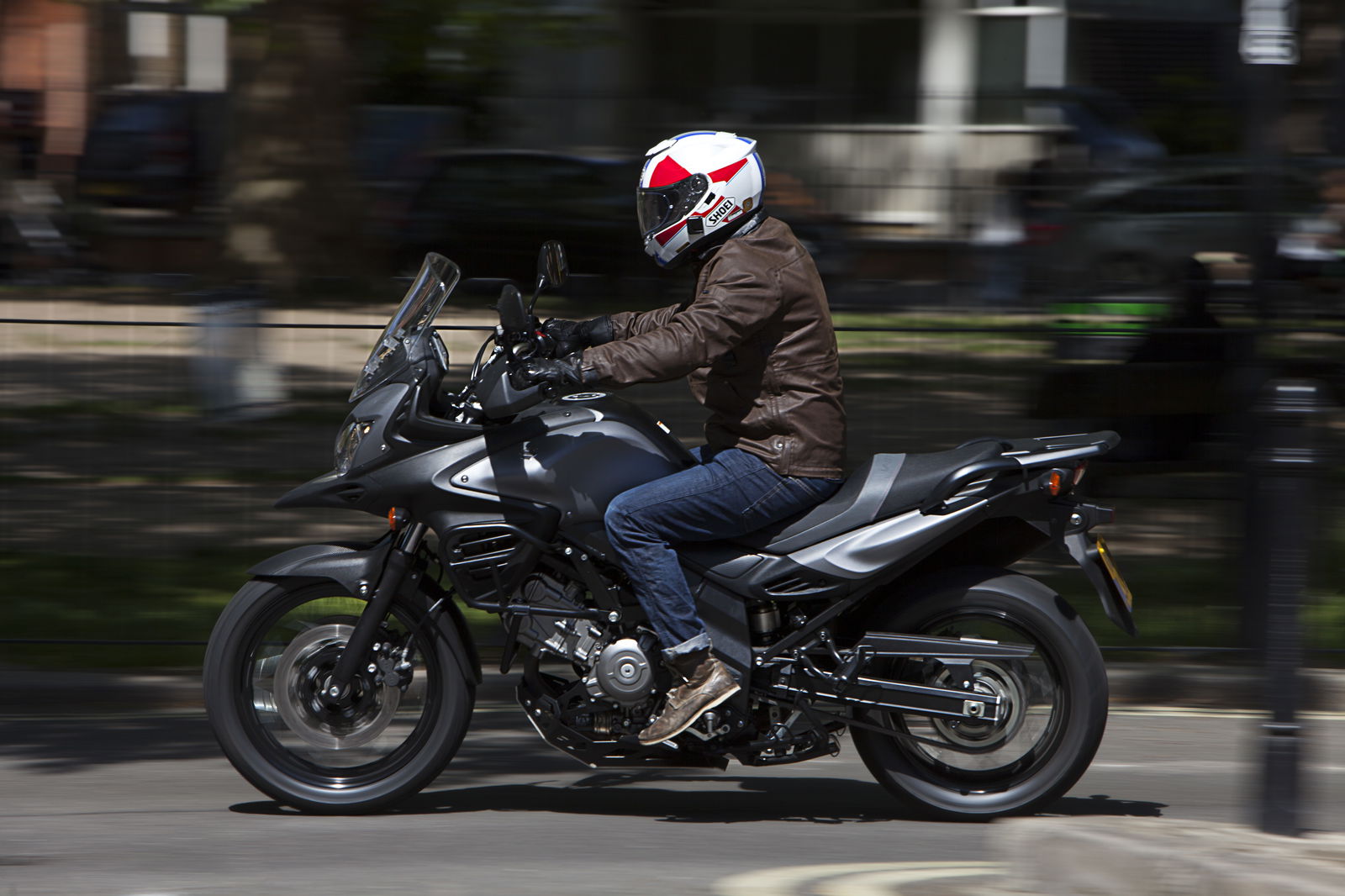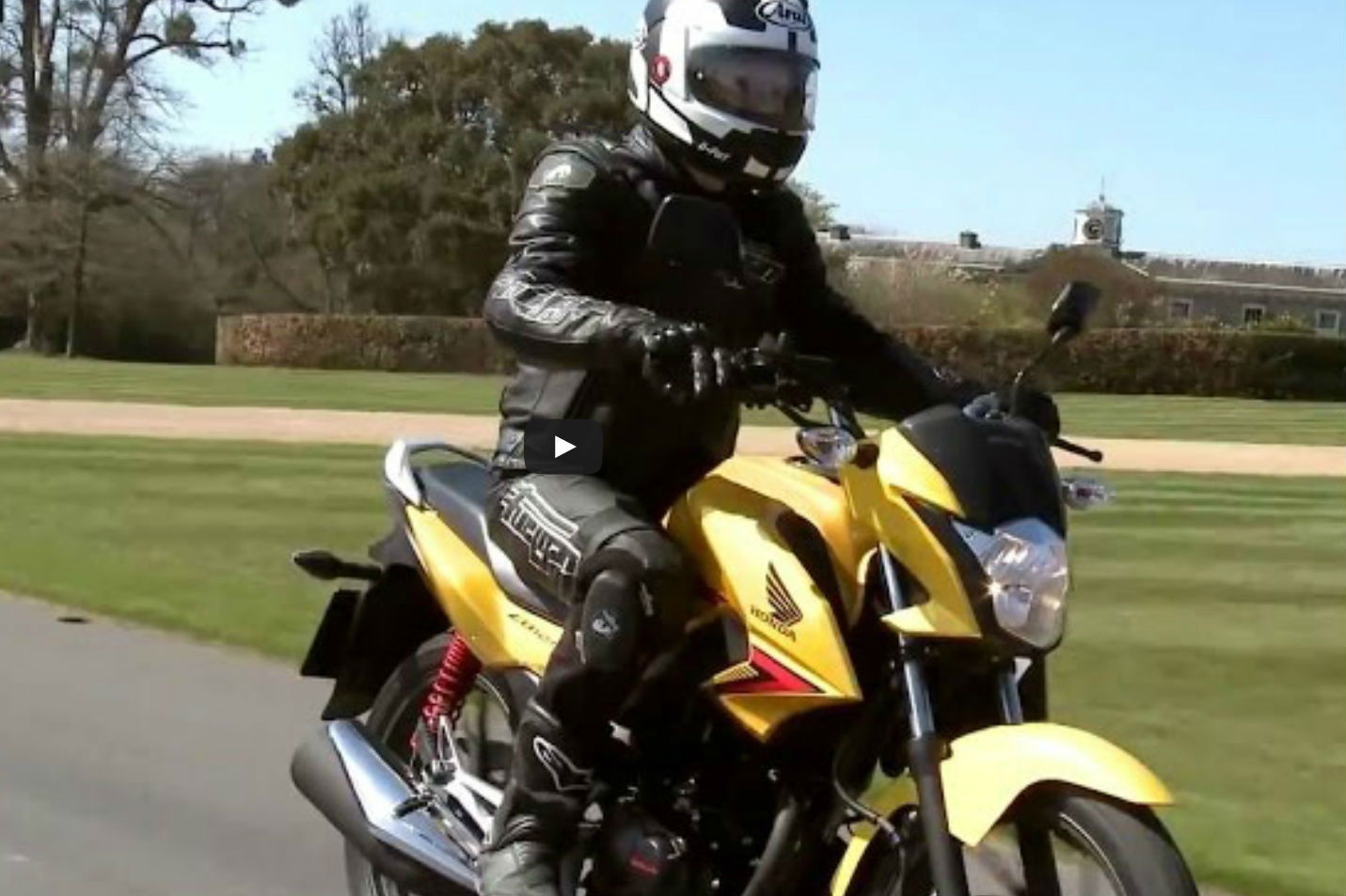UK road test: Suzuki V-Strom 650XT review
‘More adventure as standard,’ says Suzuki. So what, exactly, does that mean?


WHAT’S wrong with Suzuki’s popular soft-roader, the V-Strom 650? Not soft-roader enough for some, apparently.
So for 2015, Suzuki has expanded the range with a new edition, the V-Strom 650XT.
It’s gained an alloy sump guard, crash-protection bars and plastic hand-guards. Most significantly, it’s got wire-spoked wheels, with the spokes threaded through a raised central flange in the rim to allow tubeless Bridgestone Trail Wing dual-sport tyres.
And it’s grown a beak.
The result is 'more adventure as standard,' according to Suzuki. Note the careful choice of words. Not more off-road potential as standard, more adventure as standard.
You may notice that the claim doesn't really mean much. So it's probably not surprising that the actual result feels quite a lot like the existing V-Strom 650.
The engine, based on the 645cc V-twin used for 16 years in the SV650, is mild-mannered. It’s detuned slightly from the SV’s 71hp and 47lbft to 68hp and 44lbft – but the difference is greater than those peak figures suggest. The SV is revvier, with a higher red line, at 11,000rpm; the V-Strom red-lines at 10,000. Power comes in gently in the lower range, building to a nice, likeable dollop of mid-range torque. It feels best around 6,000-7,000rpm. Higher-up, it keeps going but doesn’t feel like it has much more to give, so you might as well change up for another nice lump of unstressed mid-range.
The impression is consistent with the figures. Peak torque is at 6,400rpm and peak power at 8,800 - 1,200rpm before the red line.
The V-twin also doesn’t sound quite as good as it does in the SV. It seems to have been detuned of some bass as well as some power.
The V-Strom is comfortable and spacious though. The seat is a single unit for rider and pillion, providing both with lots of room. It’s fairly tall - I’m 5’9 and was on the balls of my feet if I put both down at once – but that means lots of leg-room while riding.
The bars are quite high and a slight reach away. My arms felt almost straight and horizontal. I suspect the V-Strom's ergonomics are arranged with a slightly larger person than me in mind, and there's nothing wrong with that.
The screen is tall and offers the crudest kind of adjustability: you take it off and put it back on again, inserting the mounting bolts into different holes in the fairing, and rearranging rubber plugs to cover the empty ones. There' a choice of three levels. With practice you might do it in five minutes, using an Allen key. More likely you'll choose a level that suits you and never touch it again.
At the middle setting the top of the screen was probably about level with my chin and at the highest my nose. Either way it quietened the wind at motorway speeds, although some turbulence seemed to find its way around the fairing and tank to hit my chest.
The suspension has the travel and suppleness to ride straight over speed humps without slowing. It’s not sporty but it’s respectably well-damped, absorbing bad surfaces without over-reacting to them.
The brakes are similar to the SV’s, with twin-pot Tokico calipers at the front biting slightly bigger discs, at 310mm compared to 290. At the rear is a single-pot Nissin caliper, again like the SV’s.
They feel like the SV’s too: powerful enough but without aggressive initial bite. In other words, a bit soft by latest standards, including those of direct V-Strom competitors like Kawasaki's Versys 650.
I kept coming back to Versys 650 as I rode the V-Strom. At £6,749 plus on-the-road charges, the Kawasaki is £250 cheaper than the base-edition V-Strom, and sharper in probably every respect.
The Versys is just as comfortable and it’s got a proper adjustable screen, one that can be altered without tools. It’s better looking, with pointier styling for 2015. In contrast the blobby V-Strom is looking dated and the XT’s beak makes it look like exactly like a rubber duck.

